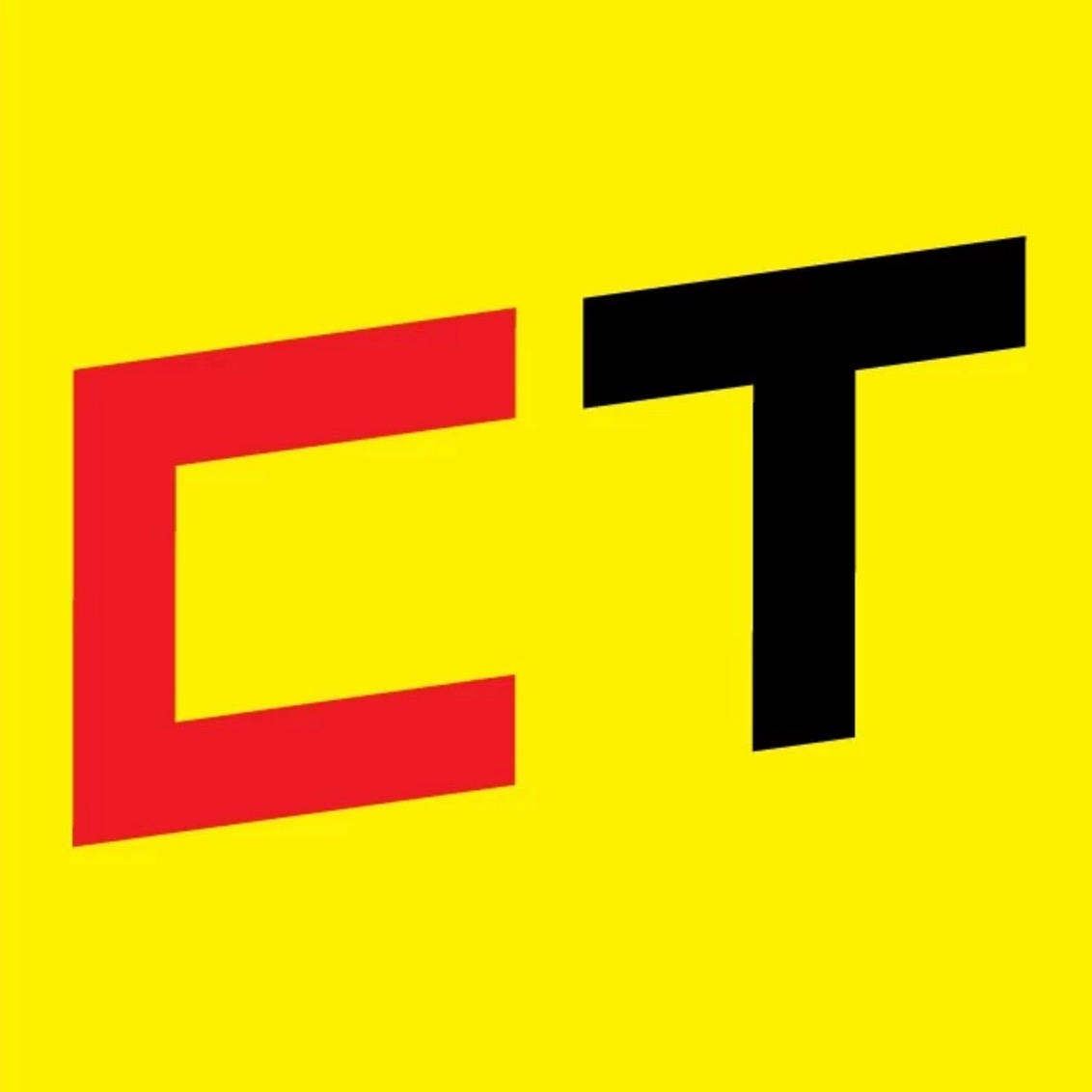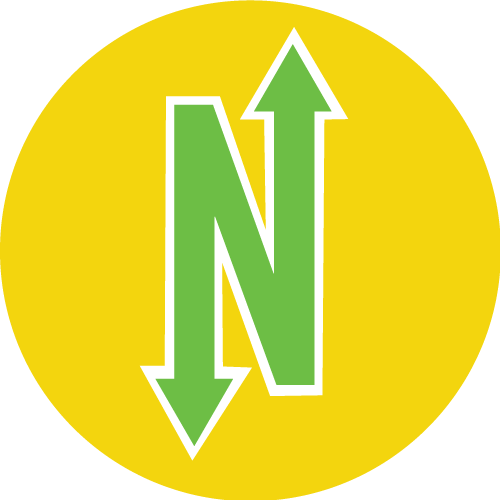19 January 2026
Baby Care
Tools for Possibilities: issue no. 173
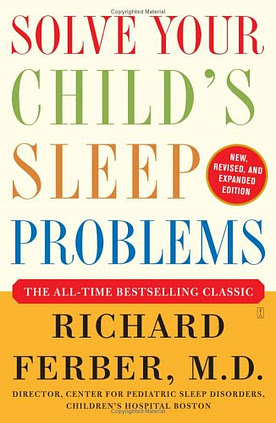
Essential parental skill
Solve Your Child’s Sleep Problems
I was trying to think of the book that has had the greatest effect on my life. Books like Zen and the Art of Motorcycle Maintenance , or The Fountainhead carried a lot of philosophical weight at the time I’d read them in college but they seem like junk upon re-reading them now. So, I asked myself again, what book has really changed my life? Then it hit me: it was, without a doubt, Richard Ferber’s Solve Your Child’s Sleep Problems.
We have two kids, one age six, the other 11 months. When our six year old was a baby, we put her to sleep by holding her and rocking her. She would wake up every couple of hours, crying for us to come back and rescue her. We finally gave up and let her sleep with us. It was the only way we could get any sleep. To this day, she demands that one of us crawls into bed with her until she falls asleep.
When we had our other daughter, she would cry for us every hour at night. The whole family was exhausted from the ordeal. Would we have to suffer this ordeal for three more years?
Some friends told us to “Ferberize” her and we’d all be able to sleep soundly. We were skeptical, but we bought the book and followed the instructions faithfully. In a nutshell, Ferberization entails putting your baby in her crib, kissing her goodnight and walking out of the room. She’ll cry, of course. After five minutes, you walk in and reassure her, then walk out again. This time you wait ten minutes. You repeat this, adding five minutes between return visits. It sounds cruel. As a parent, your instinct is to run to your baby as soon as she starts crying. But in this case, not following you instincts is the best course of action. It took exactly two nights to Ferberize our baby. She has learned to fall asleep on her own, and when she wakes up at night, she knows how to fall back asleep on her own. Best of all, she is happy, confident, and well-rested. And so are we. We have our nights, and as a result, our days back.
While this was truly a life-changing book, you really don’t need to read it. Other chapters address the nature of sleep and how to deal with more unusual child sleep problems, but for most people, the procedure I described above is all you need. Reading the book, however, made me feel better psychologically about going through with it. — Mark Frauenfelder
I have three kids. This method works. — KK
- Better than lying with your toddler or young child until he falls asleep at night is for him to fall asleep with a “transitional object” — a stuffed animal, a doll, a toy, a special blanket. The toy will often help him accept the nighttime separation from you and can be a source of reassurance and comfort when he is alone. It will give him a feeling of having a little control over his world because he may have the toy or blanket with him whenever he wants, which he cannot expect from you. His toy will not get up and leave after he falls asleep and it will still be there whenever he wakes.

Distributed weight babywearing
There are so many baby carriers on the market right now, and I’ve tried a good deal of them: various slings, the Ergo Baby, Baby Bjorn, and the like all tend to put the bulk of the baby’s weight on one part of the back. While there is some distribution with shoulder or hip straps, the weight is still focused primarily on one area (shoulder/hips). I had seen the Moby Wrap and had decidedly avoided trying it, as it looked complicated and uncomfortable. A friend finally convinced me to try one, and I fell in love.
Not only is my baby securely snuggled up against my body, but it is incredibly comfortable to wear. It looks to be about 20 feet of fabric that you wrap around your body and slip the baby into. No doubt based on some age-old method of carrying babies, it is by far the most comfortable and versatile carrier I’ve seen. Because it crosses around your body so many times in different locations, it distributes the weight of the child to a variety of places: shoulders, upper back, lower back and hips. Plus, the baby can face forwards, backwards or sideways when worn on your front, and she can be worn on your hips or back as well.
While it does require an introduction on how to put it on, once you have figured out how it works, it could not be simpler to use. The basic concept is that you create a cross of fabric on your body and slip the baby between you and the cross, with her legs hanging out between. Also, because of the criss-cross over your shoulders you can nestle the baby’s head under the wrap, allowing full protection from the sun or, more importantly for the new parent, a quiet zone in which to nap, even at a bustling market. For all its simplicity this is simply the best baby carrier available.
There are several variations on this idea — one with rings, one made of more stretchy material, one with fancy patterns — from various manufacturers, but the basic design is all the same — wrap the fabric around your body, slide the baby in and enjoy. — Elizabeth Sendil
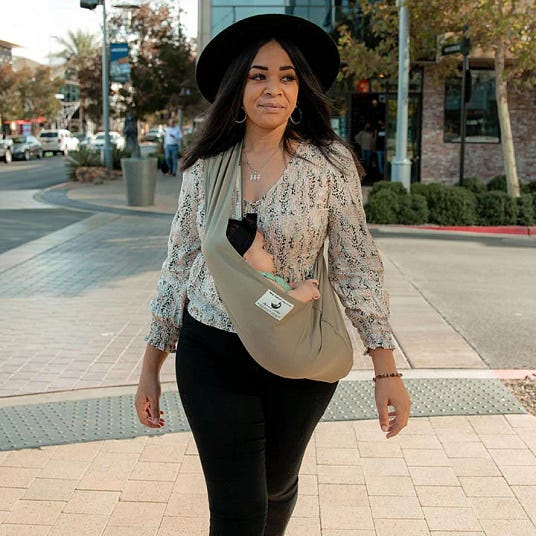
Simplest baby carrier
Like most Americans, I hauled my firstborn around in his carseat/infant carrier. Never again. For my second child, I researched slings extensively, and bought a New Native. It’s simpler than any other sling, including the Maya sling Cool Tools reviewed.
New Native is just one piece of fabric, hemmed and stitched into a big pocket. That means no adjustment rings or buckles to come loose or fiddle with. Accordingly, it’s sized. I wear a medium. My husband, who is much bigger than I am, wears my (medium) sling as well — there are three sizes, small, medium, and large, and the medium fits a pretty wide range of people.
I’ve slung my second baby since day one. She has taken countless naps in it. The sleek, professional look of the New Native means that a lot of people take it for fashion. While my daughter was small, they didn’t even know I had a baby on. I wore it to the office and even taught class with it.
At nine months I can count on one hand the number of times my daughter has ridden in a stroller. Everywhere I go people who see it wish they had known about it when they were carrying babies, and ask me where I got my sling: New Native. — Donna Bowman
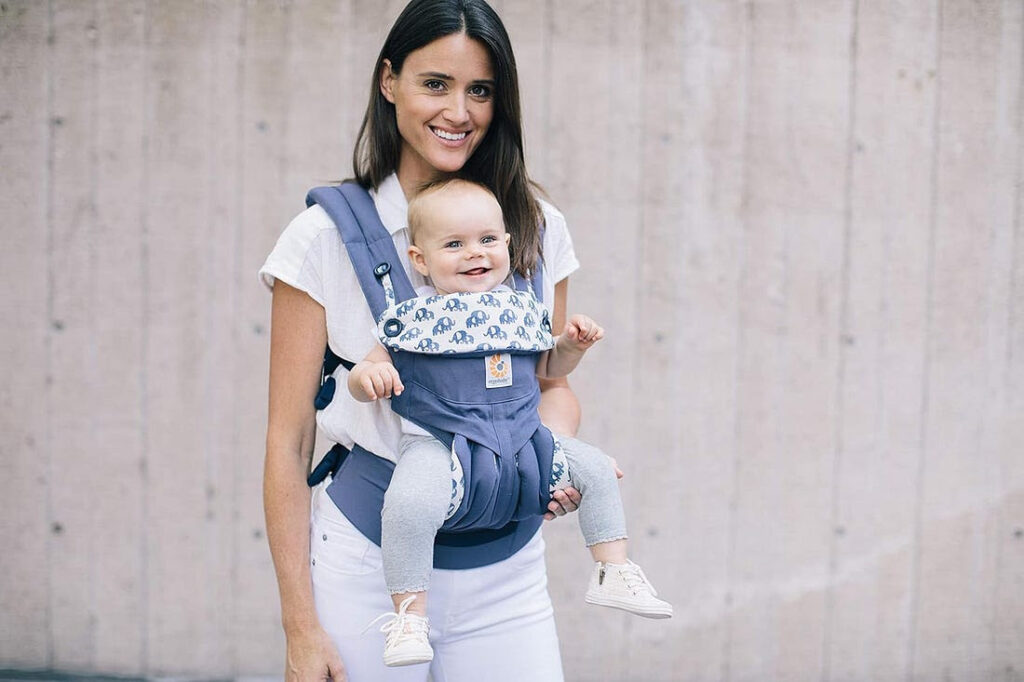
Back/front/hip infant carrier
We carried our seven-month-old daughter around Prague and Leipzig for hours in a standard BabyBjörn this last winter and she/we loved it — cozy and comfortable. The problem: it’s only a front carrier, and since then, she’s gotten heavier, which started to take it’s toll on our backs (imagine carrying a bowling ball strapped to your chest.). Now we’re using an Ergo, which can be easily re-configured for back-, front-, or side-carrying. Since it buckles around your waist, most of the weight is put on your hips. While an “original” BabyBjörn is rated for use with babies up to 25 lbs, I tried ours with our daughter when she was 15 lbs and it was a no go. She’s heavier now, and the Ergo remains incredibly comfortable: I’ve noticed much less lower back strain.
Learning to scoot the baby around your hips, onto your back, and into the Ergo without outside help is a bit of a production at first, but no problem once you get the hang of it. If you want to put the pack in front or on your hip, it’s quite simple, too (ed. note: the videos are quite helpful). Like the BabyBjörrn, the Ergo is made of cotton and cleans up very easily with just a sponge most of the time. It can be washed in a machine, too. There’s a cotton hood (the green fabric in the pic) that attaches with snap buttons for when the baby is sleeping — protects her from the elements, and keeps her head from flopping around.
Note: BabyBjörrn does make an “Active” model (which we have not tried) with lower back support that is supposed to “ease the burden.” However, you cannot convert that one to a hip/back carrier. —Brandon Summers

Bedwetting solution
Our son is a very sound sleeper and had problems with bedwetting. We tried everything we could think of. Finally I stumbled across a mention of Enurad in a parents’ forum. It’s a wireless wetness sensor that you place in the child’s underwear. A standard alarm clock has been modified to ring at the slightest wetness. Enurad combined with limiting nighttime fluids solved the problem in a couple of months. He wore the device for sometime after that as an insurance policy. He just slept better knowing it was there. At $210 it’s not inexpensive, but worth every penny. Enurad doesn’t have a US distrubuter that I know of. I ordered ours from Austrailia. Highly Recommended. — Johnboy
According to the most recent science moisture alarms are the most lasting medical cures for nocturnal bedwetting, better than commonly prescribed drugs. —KK
Once a week we’ll send out a page from Cool Tools: A Catalog of Possibilities. The tools might be outdated or obsolete, and the links to them may or may not work. We present these vintage recommendations as is because the possibilities they inspire are new. Sign up here to get Tools for Possibilities a week early in your inbox.
01/19/2618 January 2026
Recomendo Deals / Zip Air / 35 simple health tips
Recomendo - issue #497
Recomendo Deals
We launched a free daily email newsletter called Recomendo Deals that alerts you when products we’ve previously recommended in Recomendo and Cool Tools drop to unusually low prices. Here’s how it works: Every day, the system checks thousands of products we’ve recommended over the years against Keepa, a service that tracks Amazon price history. When a product falls 20% or more below its 90-day average price, or hits an all-time low, it surfaces as a deal. These aren’t random products — they’re things we’ve already vetted and recommended. I’ve already purchased a few items myself. It literally takes 20 seconds to scan the 5 to 10 deals that show up each day, and most days there’s nothing I need. But occasionally, something I’ve had my eye on drops to a great price. Give it a try by subscribing here. — MF
Bargain flights to Japan
By far the best bargain flights to Japan are through a Japan Airlines subsidiary called Zip Air. Our family used it going both ways to Tokyo this holiday and I can highly recommend them. All routes begin or terminate in Tokyo, flying from hub cities in Asia, such as Singapore, Hong Kong, and from select cities in the US. Prices vary widely during the year, but on some weeks this coming spring an economy ROUND TRIP flight from San Francisco to Tokyo is only $283!!!! Of course, they charge for everything from meals, water, blankets, and luggage. But we can manage. And their “lie full flat” seats (business class) are less than $2,000, but also without blankets, pillows, or service. We tried both the economy and full flat seats, and both are worth the small hassles for the ridiculous cheap prices. — KK
35 simple health tips
This article gathers 35 simple, research-backed practices from sleep specialists, sex therapists, psychologists, nutrition scientists and more, each offering one small habit they personally rely on to support everyday well-being. The whole list is great, and I especially love the reflection on “soft fascination” — turning to simple, almost meditative tasks when there are too many mental tabs open, and letting answers rise on their own. For me, washing dishes is always a meditative reset that clears out mental clutter and restores a sense of spaciousness. — CD
Understanding Old English
What we now call the English language has been rapidly changing for over a thousand years. The best way to experience this evolution is to watch this video by Simon Roper where the same passage is recited in proto-English, and then repeated in newer versions of Old English every hundred years, until you reach modern English. The game is to see when you begin to understand it. For me it was around 1600 in part. This gimmick, more than any other, gave me an appreciation of what ancestral versions of English were like. — KK
Dream school newsletter
Every night I have multiple, vivid dream adventures, and for the past five years I’ve been writing them down and treating them as a parallel stream of consciousness for self‑reflection, healing, and guidance. The dream teacher who’s helped me the most is author Robert Moss, whose free Substack is a living archive of shamanic “active dreaming” prompts, personal stories, and techniques that make it easy to develop a co‑creative relationship with your dreams. If you’re at all interested in understanding your dream self on a deeper level, I highly recommend subscribing to his newsletter. Two great starting pieces are “Nine Keys to Understanding Your Dreams” and “The Only Dream Expert is You.” — CD
Satisfying squish
A relative with ADHD brought a NeeDoh to a family gathering, and I couldn’t put it down. Like me, she uses fidgets to focus, and this one is perfect — a soft, stretchy ball filled with a viscous dough-like substance inside a silicone skin. You squeeze, squish, and stretch it, and it slowly oozes back to its original shape. The resistance is deeply satisfying. Her tips: keep it in the fridge to make it harder(and more fun) to squeeze, and when the silicone skin gets grungy, wash it with soap and water, then rub cornstarch over it — good as new. NeeDoh comes in various shapes (balls, cubes, figures) and costs around $5-10. Great for desks, meetings, or anywhere you need to keep restless hands busy. — MF
Sign up here to get Recomendo a week early in your inbox.
01/18/2616 January 2026
Book Freak #193: How to Decide
Simple Tools for Making Better Choices
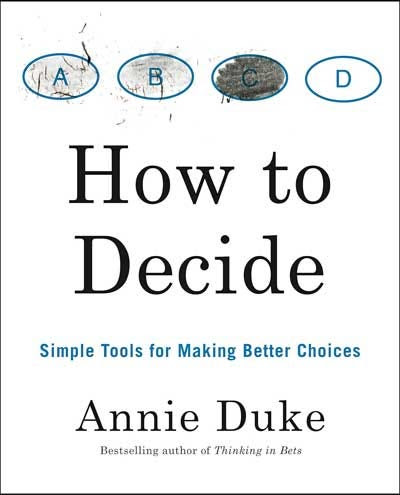
Drawing from her experience as a professional poker player and decision strategist, How to Decide offers a practical toolkit for making better choices by separating decision quality from outcome quality — teaching you to think in probabilities, overcome cognitive biases, and stop second-guessing yourself.
Core Principles
Stop “Resulting”
“Resulting” is Duke’s term for judging a decision’s quality by its outcome. A good decision can lead to a bad outcome (and vice versa) because of factors outside your control. When you overfit decision quality to outcome quality, you risk repeating errors that preceded a lucky good outcome and avoiding good decisions that didn’t work out due to bad luck.
The Only-Option Test
When stuck between choices, ask yourself: “If this were the only option I had, would I be happy with it?” If you’d be happy with either option, the decision is actually easy — flip a coin. This test reveals that “hard” decisions are often easy because both options are acceptable.
Think in Probabilities
Instead of binary thinking (”this will work” or “this won’t”), assign percentage likelihoods to outcomes. Every decision involves the Three P’s: Preferences (what you value), Payoffs (potential gains and losses), and Probabilities (how likely each outcome is). This framework forces you to acknowledge uncertainty and consider alternatives.
Get the Outside View
Solicit feedback from others before making decisions, but do it right: let them answer first before expressing your own opinion to avoid contaminating their views. Ask them to argue against your position. The goal is getting genuine perspectives, not confirmation of what you already believe.
Try It Now
- Think of a decision you’re currently facing with two or more options.
- Apply the Only-Option Test to each choice: “If this were my only option, would I be happy with it?”
- For each option, list the possible outcomes and assign a probability (percentage) to each.
- Apply the Happiness Test: “How much will this affect my happiness in a week? A month? A year?” If not much, spend less time deciding.
- If the options still seem close, flip a coin — and notice how you feel when it lands. Your reaction reveals your true preference.
Quote
“The quality of the outcome casts a shadow over our ability to see the quality of the decision.”
01/16/2615 January 2026
Cheapest Flight Destinations/Packable Daypacks/Europe Ski Bargains
Nomadico issue #188
The Best Flight Values for 2026
Keeping your variables open is the best way to snag good flight deals and Dollar Flight Club has released data on your best cheap flight bets in 2026 from the USA. Internationally, besides the cities they list in Canada, Mexico, and Central America, you’ll probably find good prices to Madrid, Lisbon, and Medellin. Domestically, the top 5 are Ft. Lauderdale, Orlando, Chicago, Pittsburgh, and Dallas.
World Cup Hotel Price Spikes
Got a friend living in a city that’s hosting World Cup matches? Hotel rates in the USA are up 50 to 100% in some cities around the event, but with so many international travelers skipping USA travel these days, Mexico is seeing price spikes that are in the stratosphere. According to this report, rates are up 405% in Guadalajara, 466% in Monterrey, and in properties not already sold out, 961% in Mexico City.
Best Packable Daypacks
One of the most useful travel items you can buy yourself or someone else is a backpack holding 20 liters or so that scrunches down into a little pouch for packing. Once you get to where you’re going, it’s great for sightseeing, hiking, or grocery shopping. I’ve used many of them over two decades, but the available ones I’d give the highest recommendation to for important features (like a water bottle holder) and durability are from Osprey, Eddie Bauer, and this Chicobag one made from recycled plastic bottles.
European Ski Bargains
Each year I update my blog post on the cheapest places to ski in Europe and even with a declining greenback, these places will still cost you a fraction of the lowest-priced options stateside. I’m heading to one in Slovakia in February that’s €49 per day for 50 kilometers of runs and I highlight others for that price down to €23 per day in locations stretching from Slovenia to Poland to Georgia. Prices off the slopes are great too, usually with better food and drink overall.
A weekly newsletter with four quick bites, edited by Tim Leffel, author of A Better Life for Half the Price and The World’s Cheapest Destinations. See past editions here, where your like-minded friends can subscribe and join you.
01/15/2614 January 2026
What’s in my NOW? — Jeremiah Krage
issue #237
I used to be a Teletubby and a Cyberman. Now I design AI personalities and characters. The link is creating fictional characters that can connect with audiences (and users). We are rapidly moving into a world where we talk to technology—I make those conversations more natural and intuitive.
- Connect with me here: https://www.linkedin.com/in/jeremiahkrage/
- See more about my AI Character work: https://workwith.jeremiahkrage.com/
- A current AI Character-led product I’m helping to design: https://www.vessa.ai/
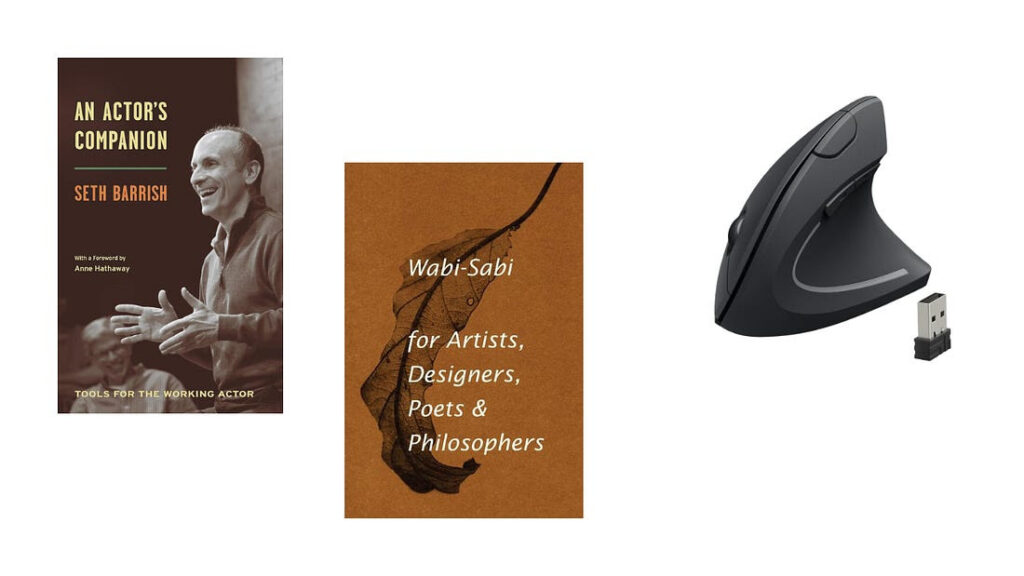
PHYSICAL
- An Actor’s Companion: Tools for the Working Actor – Seth Barrish
Even if you’re not a performer, this is full of actionable approaches to challenging assumptions, getting out of ruts, and breaking up routines so that you bring a fresh creative approach to problems. - Wabi-Sabi for Artists, Designers, Poets & Philosophers – Leonard Koren
If you struggle with perfectionism or have a tendency to overwork ideas, this offers a different perspective. If you’ve ever found yourself deeply frustrated by AI that gets close to what you want, but just keeps missing the mark, you may find the celebration of imperfection and incompleteness is a great antidote. - Anker Vertical Mouse
I was getting a lot of wrist issues using a traditional mouse. This eliminated that completely. It only took about 5 minutes to get used to the new orientation.
DIGITAL
- AI for Humans – YouTube show and podcast making AI practical, accessible, and keep it light-hearted. Hosts are both from the media backgrounds, so this skews towards creative outputs. A quick and fun way to keep on top of the latest developments in and applications of AI. I highly recommend the YouTube version as they share lots of visuals.
- DeepLearning.ai – this is a brilliant resource for upskilling in AI. Founded by the delightful Andrew Ng (Google Brain, Baidu, Stanford Uni.) who teaches many of the courses. If you’re interested in building with AI and have some technical facility, this is a great place to learn more from leaders in the field. Most courses are free (with paid certificates).
INVISIBLE
“Now is the moment to explore these new tools and shape them for the future of storytelling.” — Darren Aronofsky (filmmaker, ‘Pi’ ‘Requiem for a Dream’) talking about AI
01/14/26
13 January 2026
Woody Guthrie / Jane Austen and Virginia Woolf
Issue No. 100
HOW TRAGEDIES OF THE GREAT DEPRESSION INFLUENCED SINGER WOODY GUTHRIE
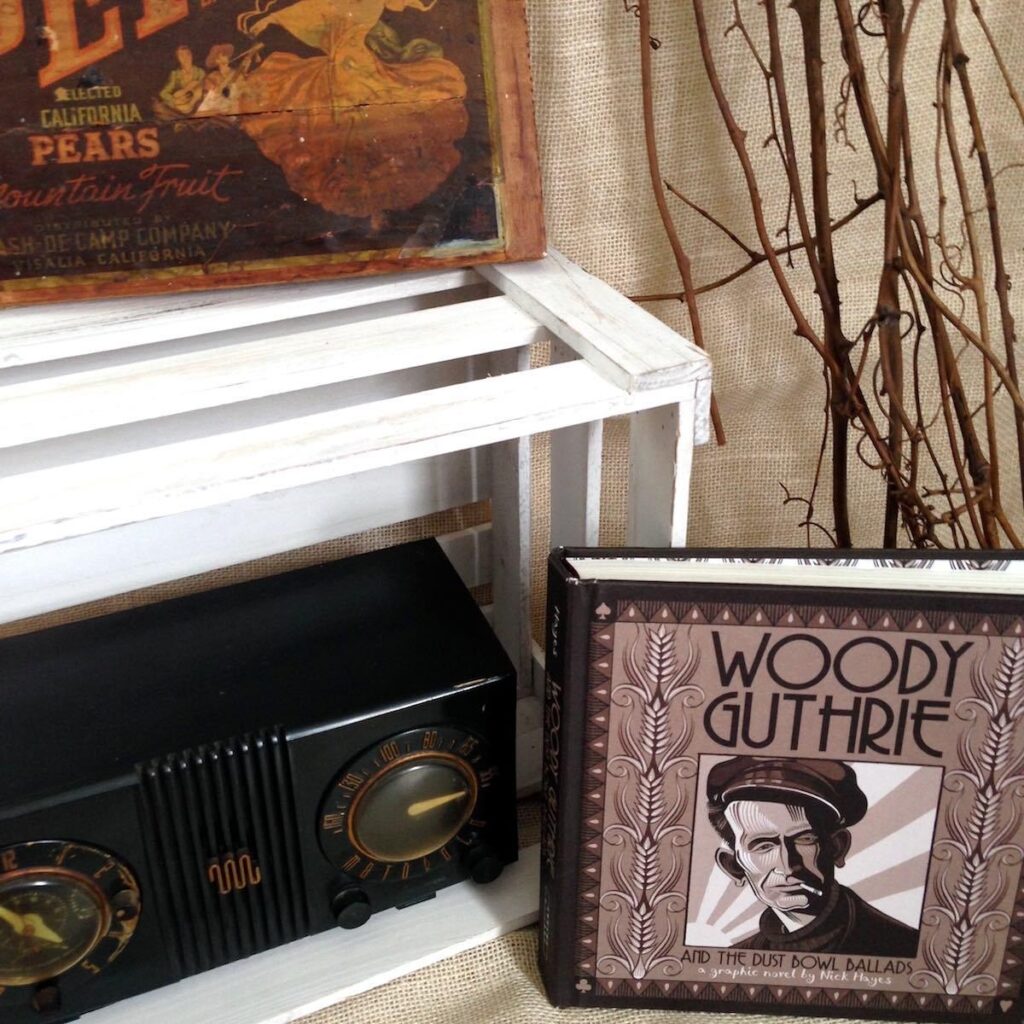
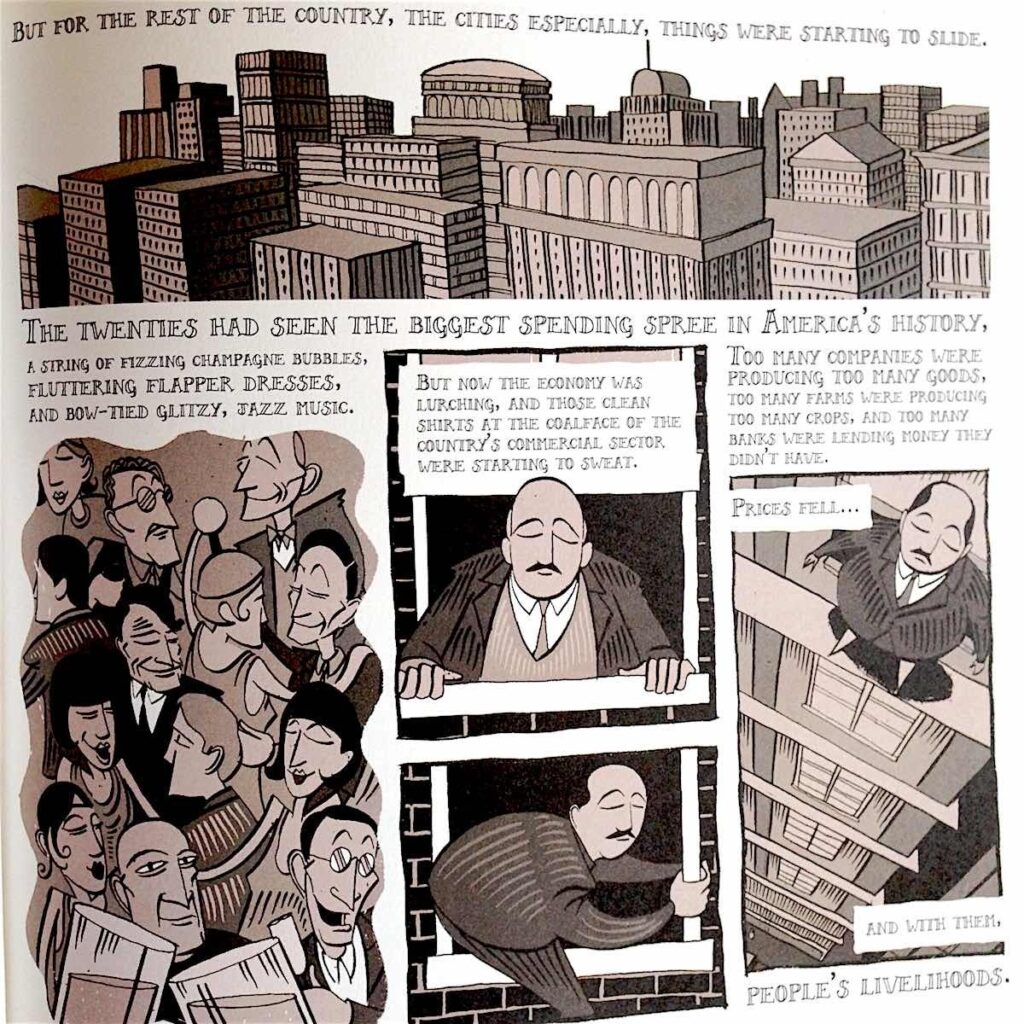
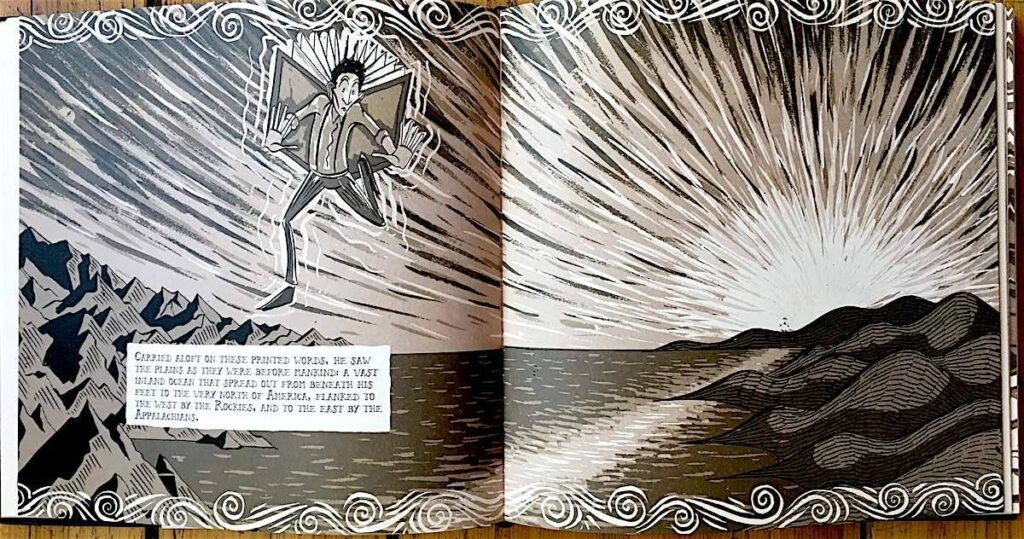
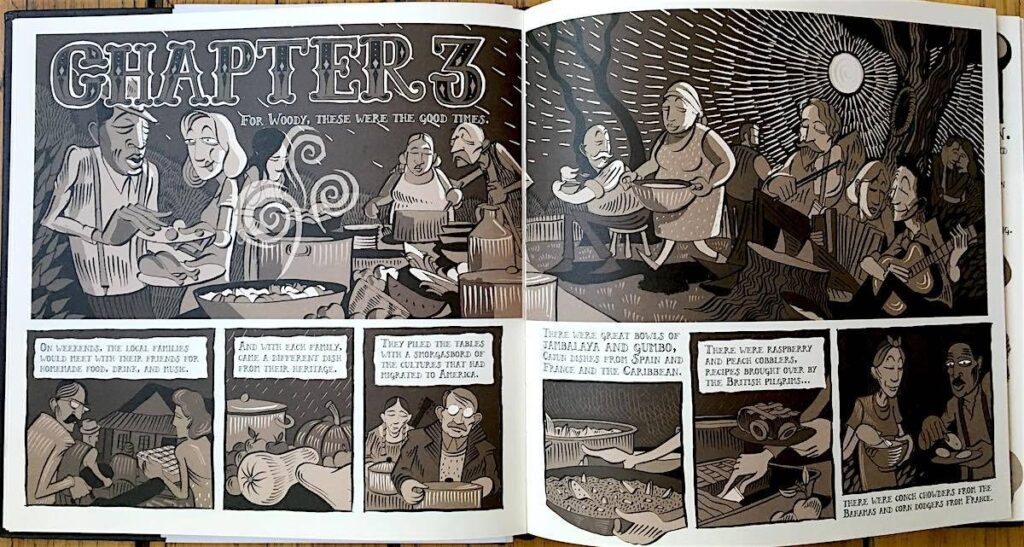




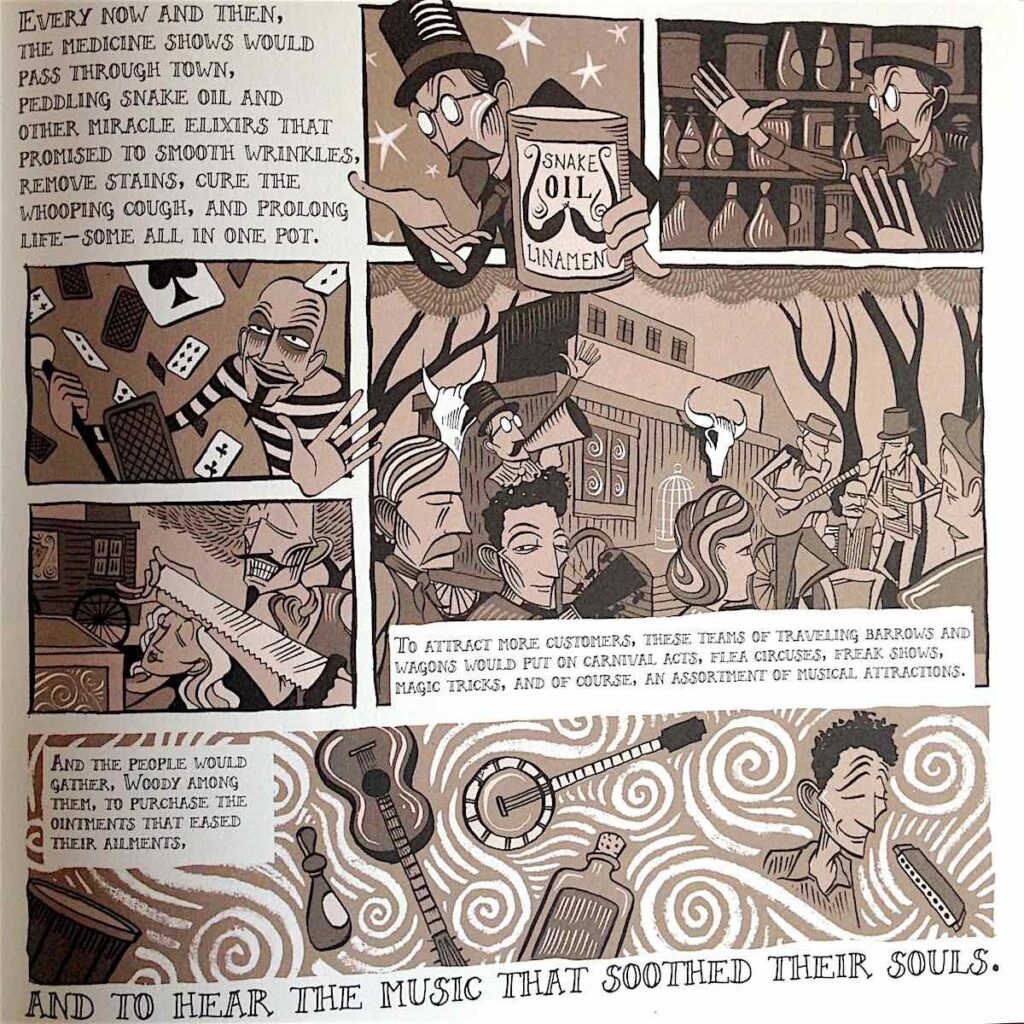
Woody Guthrie and the Dust Bowl Ballads
by Nick Hayes
Harry N. Abrams
16, 272 pages, 8.6 x 8.6 x 1.2 inches
A graphic novel of the life and early career of singer Woody Guthrie, Woody Guthrie and the Dust Bowl Ballads is a sepia and dusty brown, linocut illustrated graphic novel. It begins with harrowing tales of his youth – his mother burning his father with coal oil, resulting in her being shipped off to the Hospital For The Insane, the collapse of his Pampa hometown as the plummeting price of wheat ruined the local and national economy, and Guthrie traveling roads and hopping trains during the Great Depression. His encounters with snake oil salesmen and carnival acts, hobos, and migrant workers, as well as his exposure to the music of Cajuns, Native Americans, Xit cowboys, and Appalachian folksong performances at barn dances ultimately inspire him to take up the fiddle and write original tunes.
Along with Woody’s story, the book provides a powerful backstory on the environmental conditions of the Dust Bowl region, including the displacement of Native Americans through the push of white settlers on native lands, agriculture techniques that resulted in the tearing up of the bluestem grasses to plant wheat, an unprecedented drought, and the glut of wheat causing the exodus of settlers to California. This all brings to life the tragic unraveling of the fragile Dust Bowl ecosystem and brings about the hardscrabble lives and dust-blown landscape that Guthrie integrates into his music. Drifting through America with his guitar and knocking on doors begging for work, he reluctantly stumbles into an uncomfortable fame with a radio show, leading to national recognition. The book ends with the creation of his masterpiece, “This Land Is Your Land”, with the now-redacted communist lyrics included, which became America’s unofficial National Anthem.
Woody Guthrie and the Dust Bowl Ballads is a somber, bittersweet tale of the singer/songwriter, and the harrowing tragedy of the Dust Bowl years. It’s a weighty, handsome book. Lovely, broad-stroked illustrations bring to life the desperate struggle of 1930s midwestern America. – S. Deathrage
LIBRARY OF LUMINARIES LAUNCHES THEIR BITESIZE BIO SERIES WITH JANE AUSTEN AND VIRGINIA WOOLF
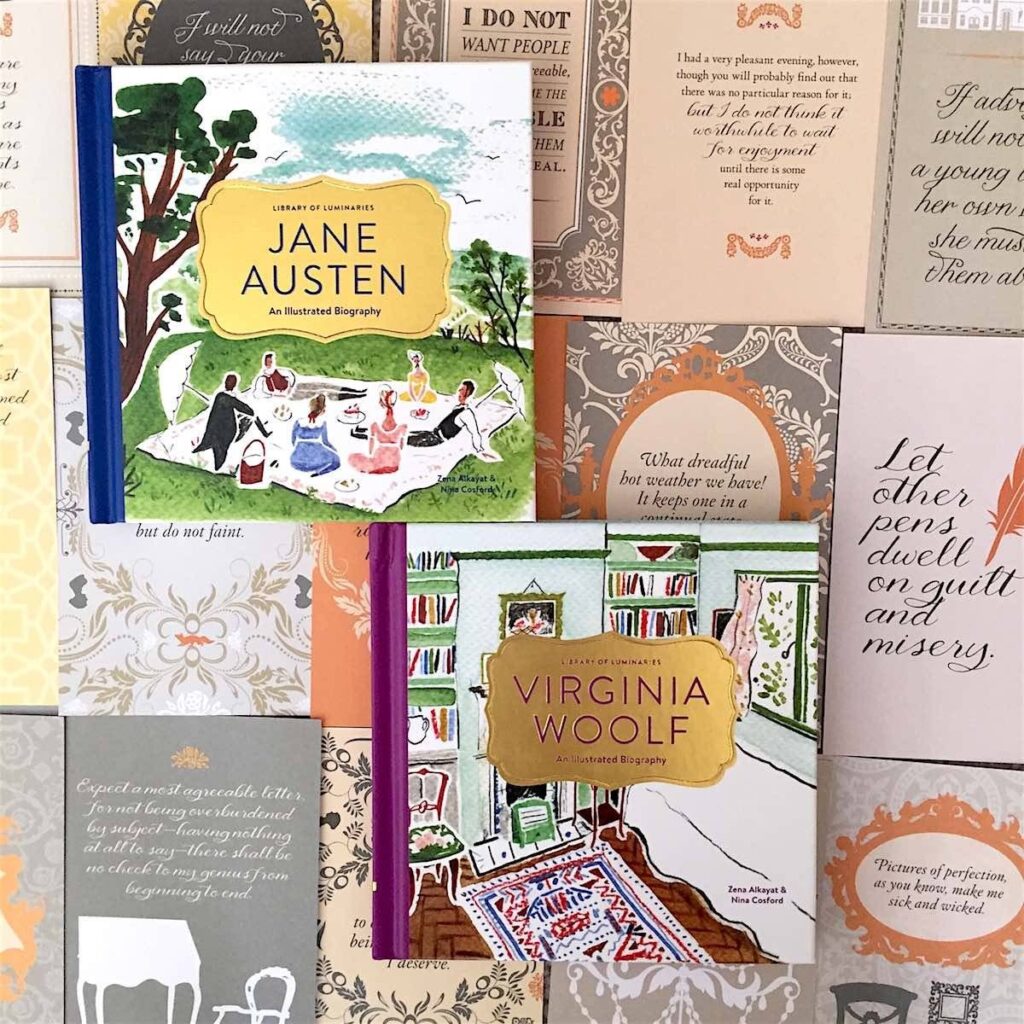
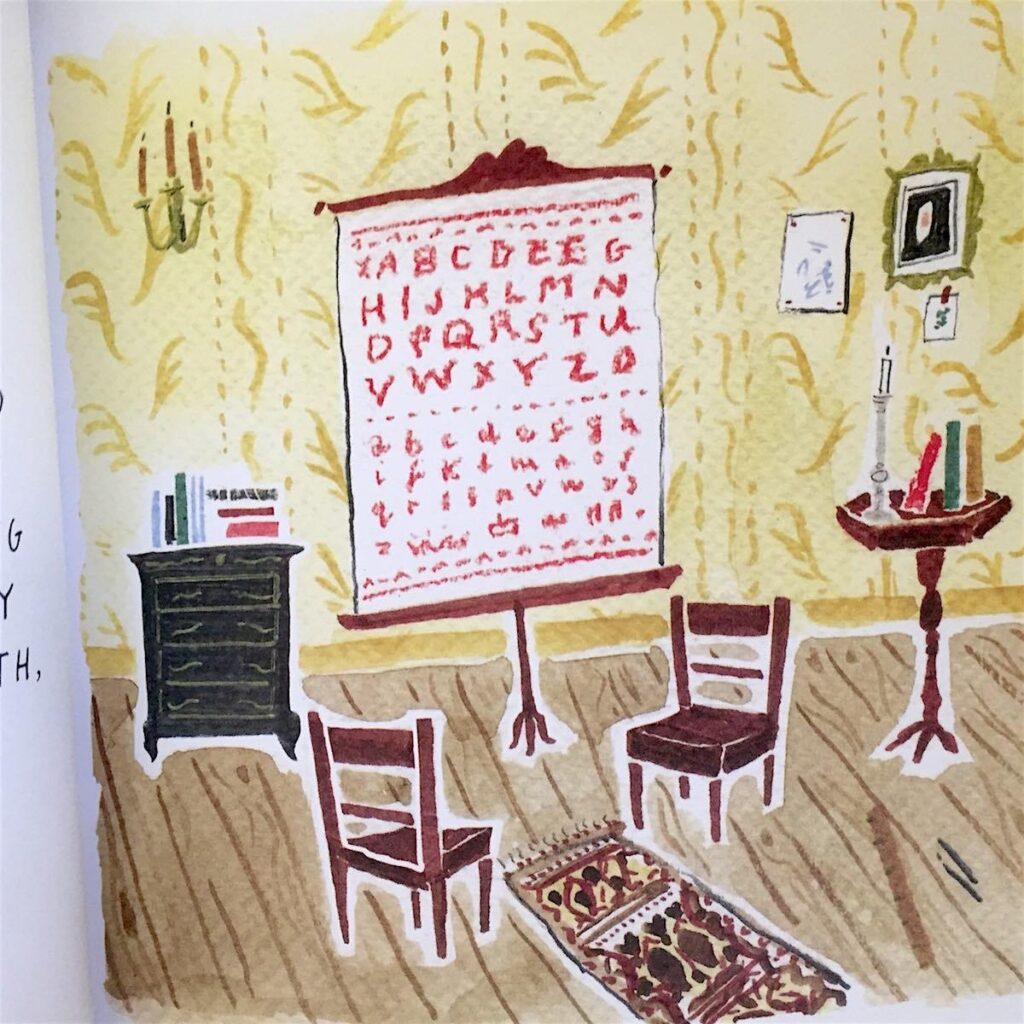
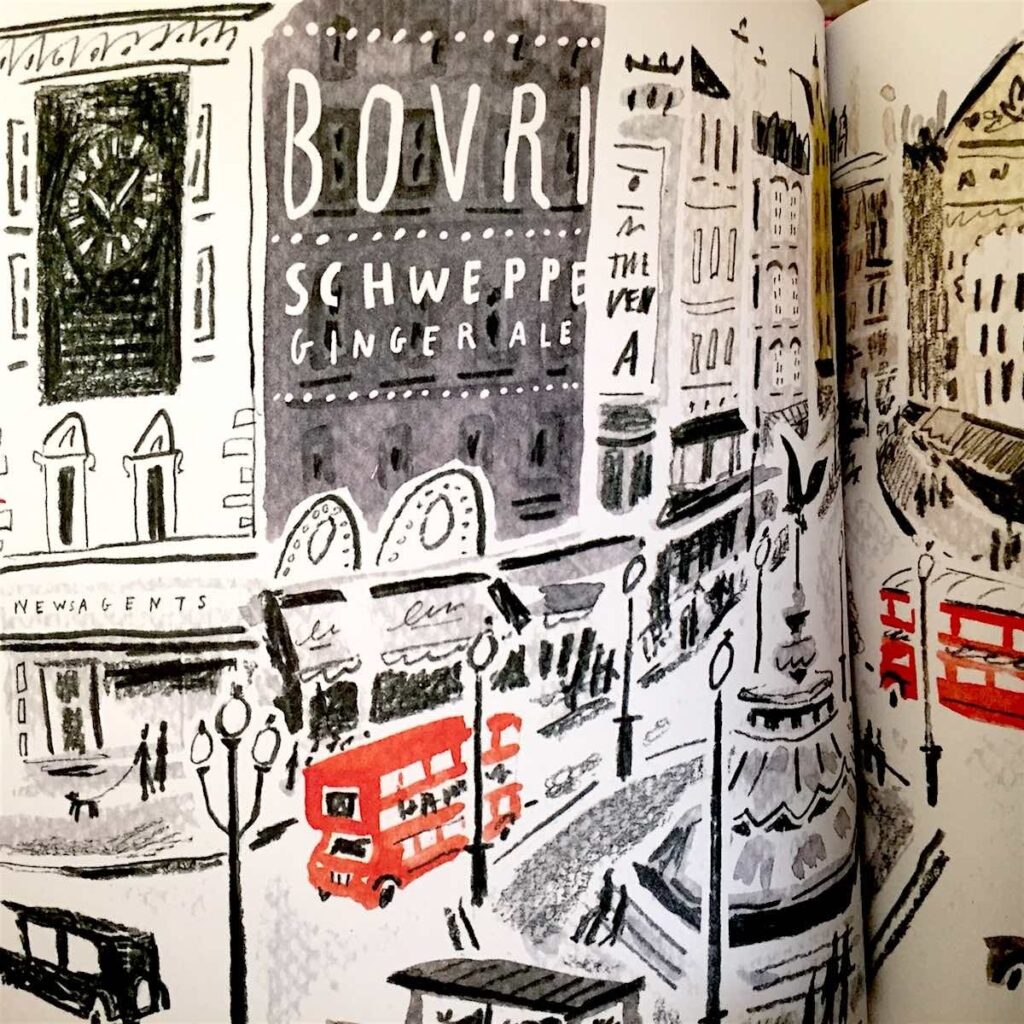
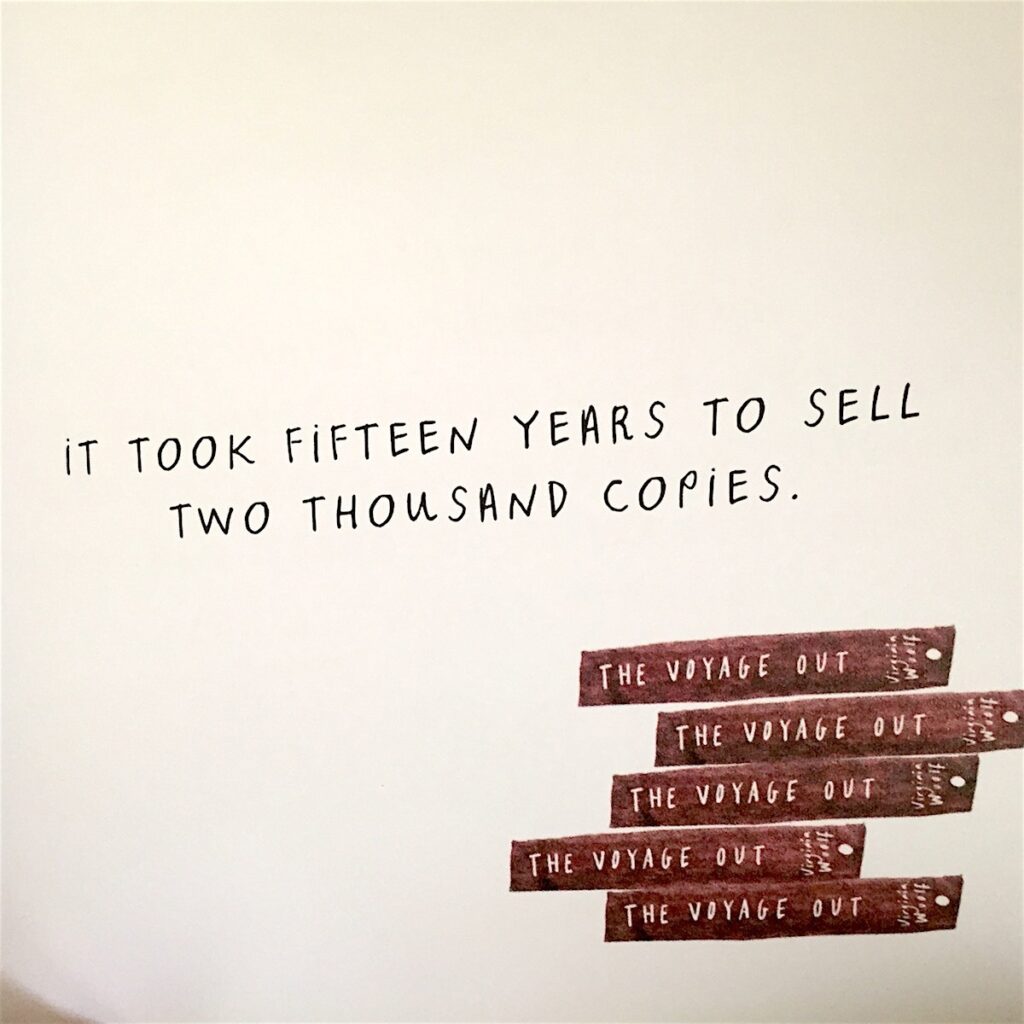
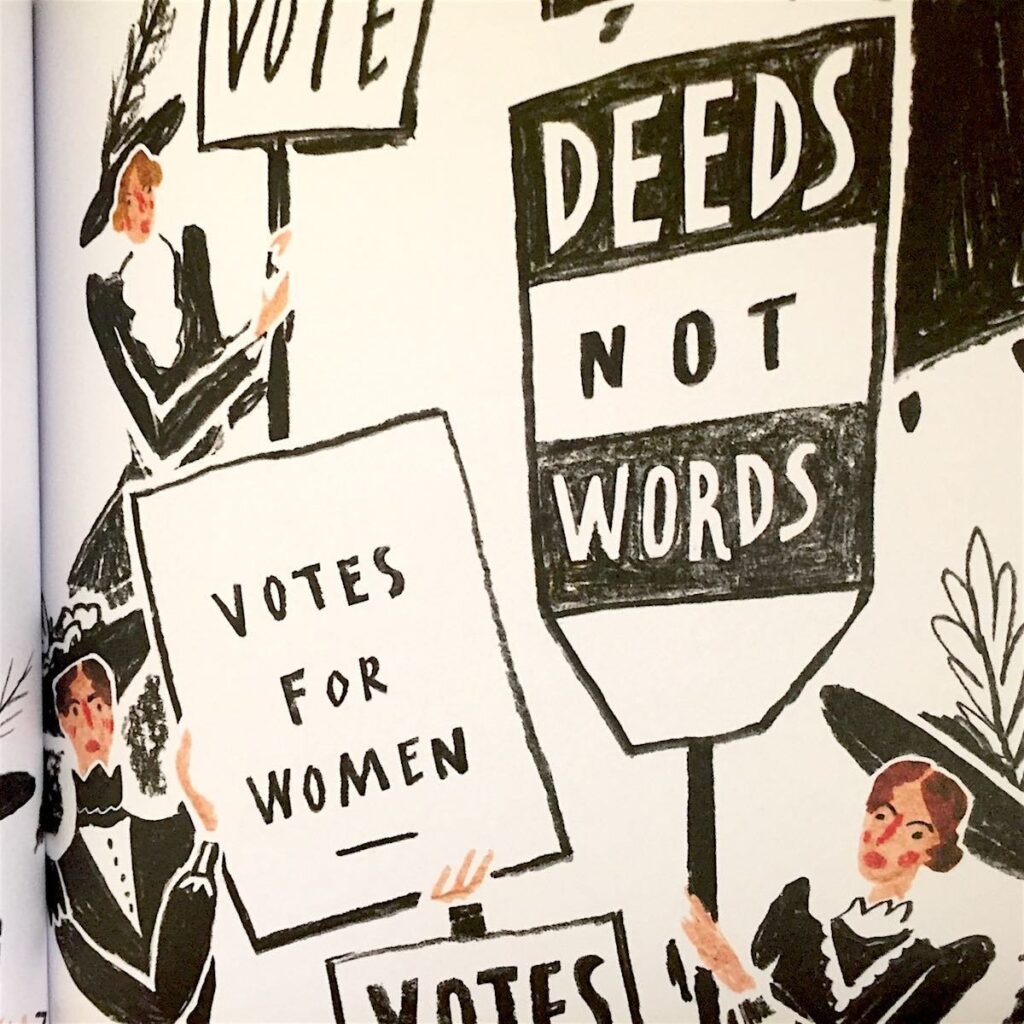
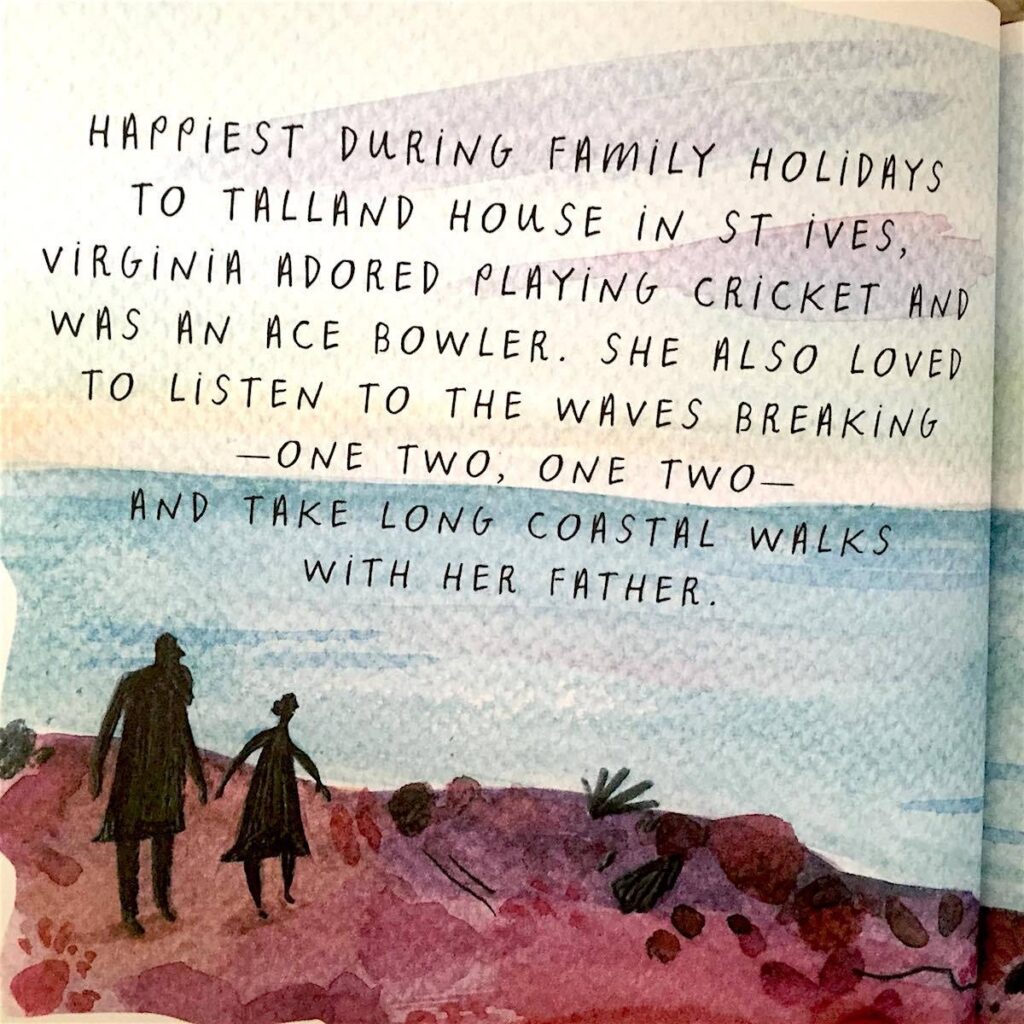
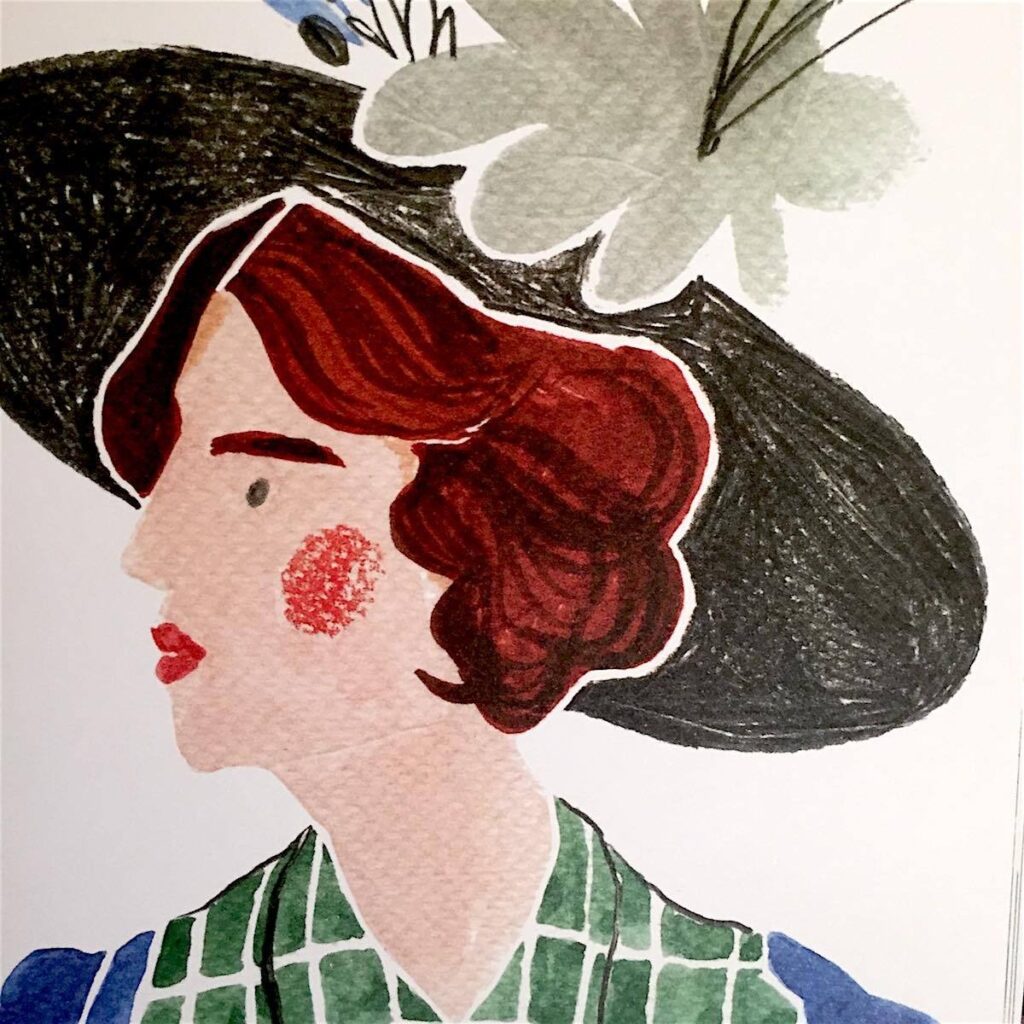
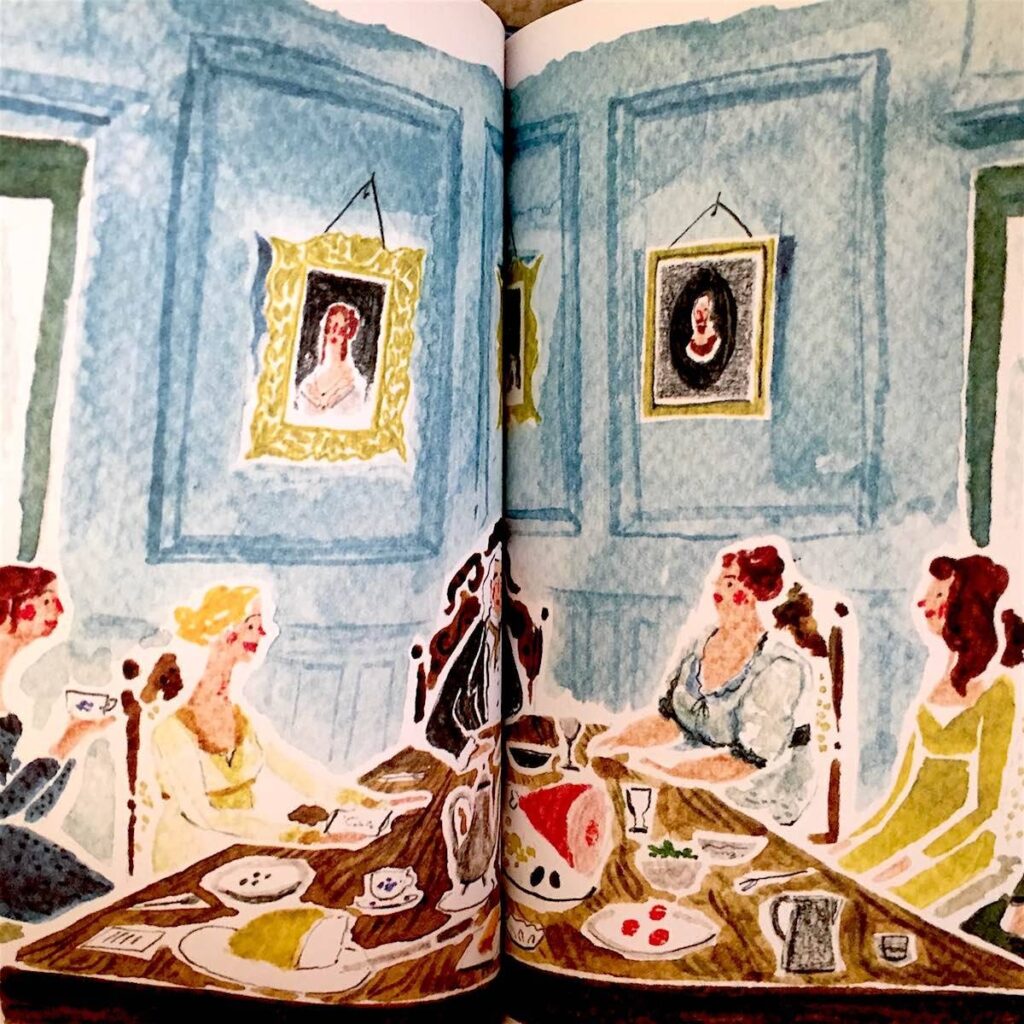


Jane Austen: An Illustrated Biography and
Virginia Woolf: An Illustrated Biography
by Zena Alkayat (author) and Nina Cosford (illustrator)
Chronicle
2016, 128 pages, 6.2 x 6.2 x 0.8 inches
Virgina Woolf:
Jane Austen:
Hand-written text, whimsical illustrations and lots of fun facts are combined into Library of Luminaries’ new series of Illustrated Biographies. The series launches with small, foil-embossed hardcover books about two famous authors – Jane Austen and Virginia Woolf. (The series will release Coco Chanel and Frida Khalo in August.) This collection is an easy way to learn about the lives and careers of classic authors – it’s like Cliff Notes for literature lovers.
Through bits about family histories, friendships, inspirations, career highlights and low points, the reader gets a glimpse into Austen and Woolf’s worlds. I knew some stuff about both authors’ backgrounds, but wow! I still learned a lot! I had no idea that Austen only earned the meager sum of 140 British pounds in royalties for two years’ worth of the sales for Sense and Sensibility. And that once Austen’s identity was made public, the Prince Regent contacted her directly because he was a huge fan of her books. She went on to dedicate Emma to him. I also didn’t know that Woolf loved dogs and had a pet marmoset named “Mitz,” nor did I know that it took 15 years for the book The Voyage Out to sell 2000 copies. We know these women had tragic lives, but they had joys too. I finished these books with a sigh. – Carole Rosner
Books That Belong On Paper first appeared on the web as Wink Books and was edited by Carla Sinclair. Sign up here to get the issues a week early in your inbox.
01/13/26ALL REVIEWS
 01/7/26
01/7/26
What’s in my NOW? — Magnus Ojala
A construction professional based in Sweden, currently working with residential projects. Interested in flow, systems thinking, and practical ways to …
EDITOR'S FAVORITES
COOL TOOLS SHOW PODCAST
WHAT'S IN MY BAG?
14 January 2026

ABOUT COOL TOOLS
Cool Tools is a web site which recommends the best/cheapest tools available. Tools are defined broadly as anything that can be useful. This includes hand tools, machines, books, software, gadgets, websites, maps, and even ideas. All reviews are positive raves written by real users. We don’t bother with negative reviews because our intent is to only offer the best.
One new tool is posted each weekday. Cool Tools does NOT sell anything. The site provides prices and convenient sources for readers to purchase items.
When Amazon.com is listed as a source (which it often is because of its prices and convenience) Cool Tools receives a fractional fee from Amazon if items are purchased at Amazon on that visit. Cool Tools also earns revenue from Google ads, although we have no foreknowledge nor much control of which ads will appear.
We recently posted a short history of Cool Tools which included current stats as of April 2008. This explains both the genesis of this site, and the tools we use to operate it.

